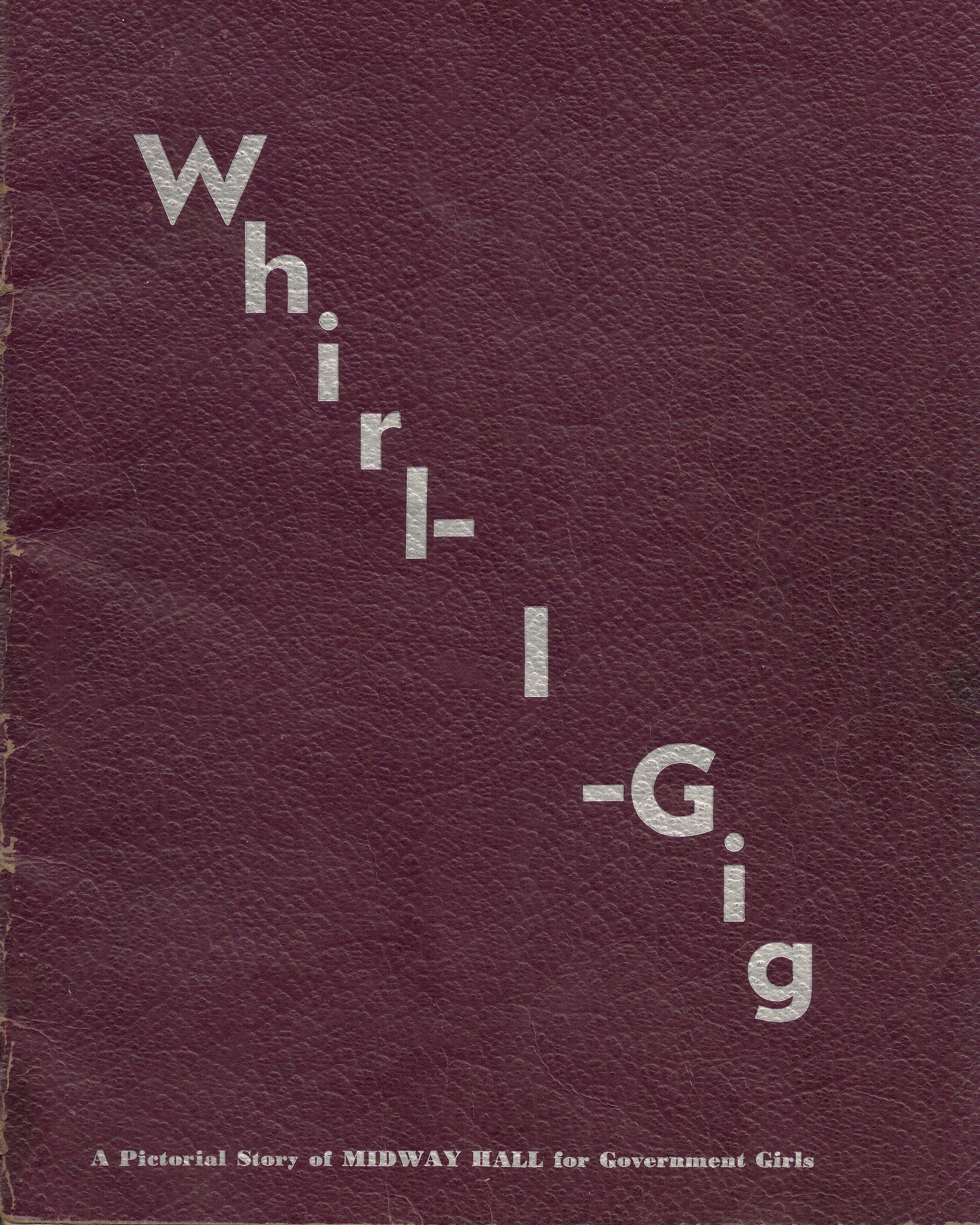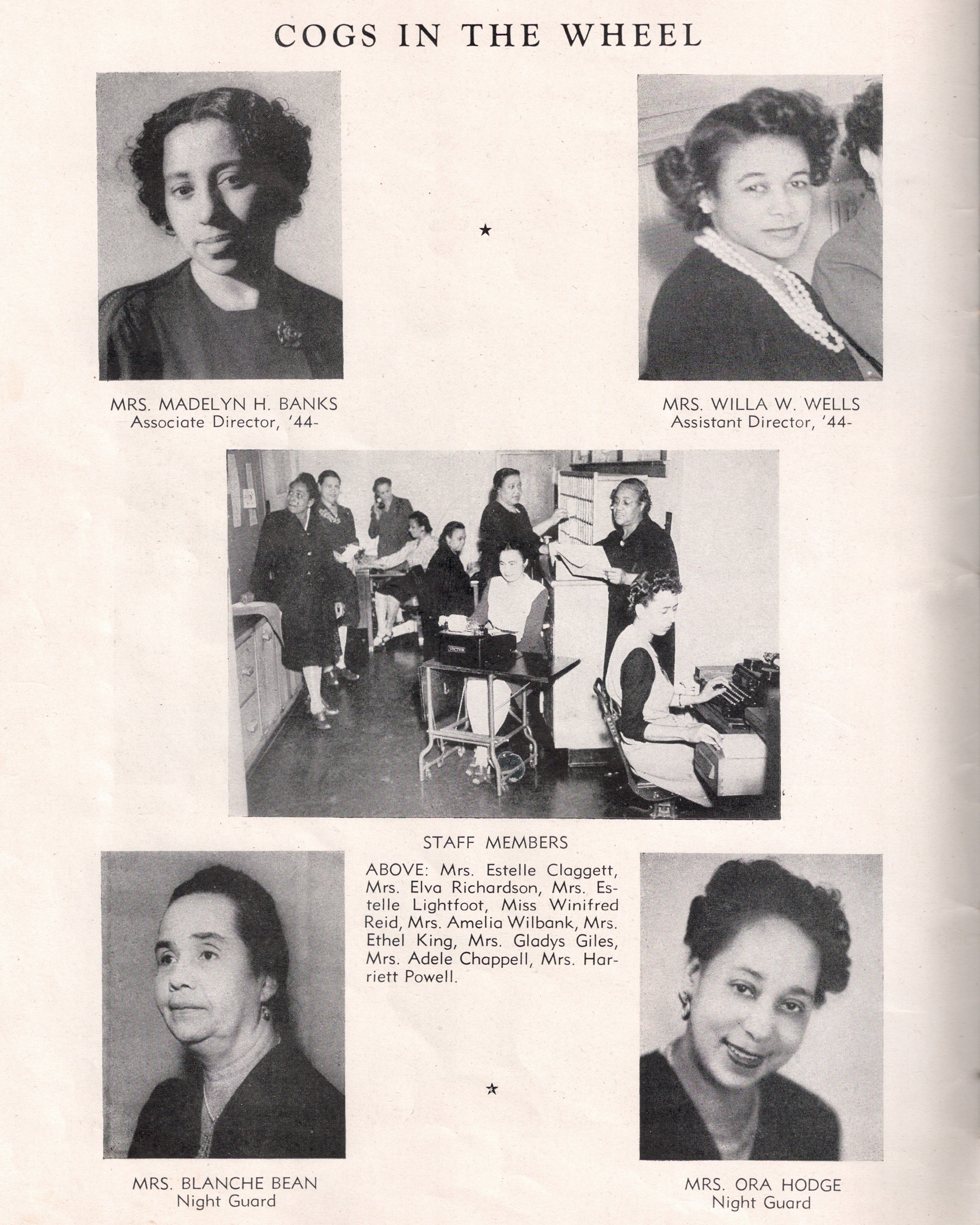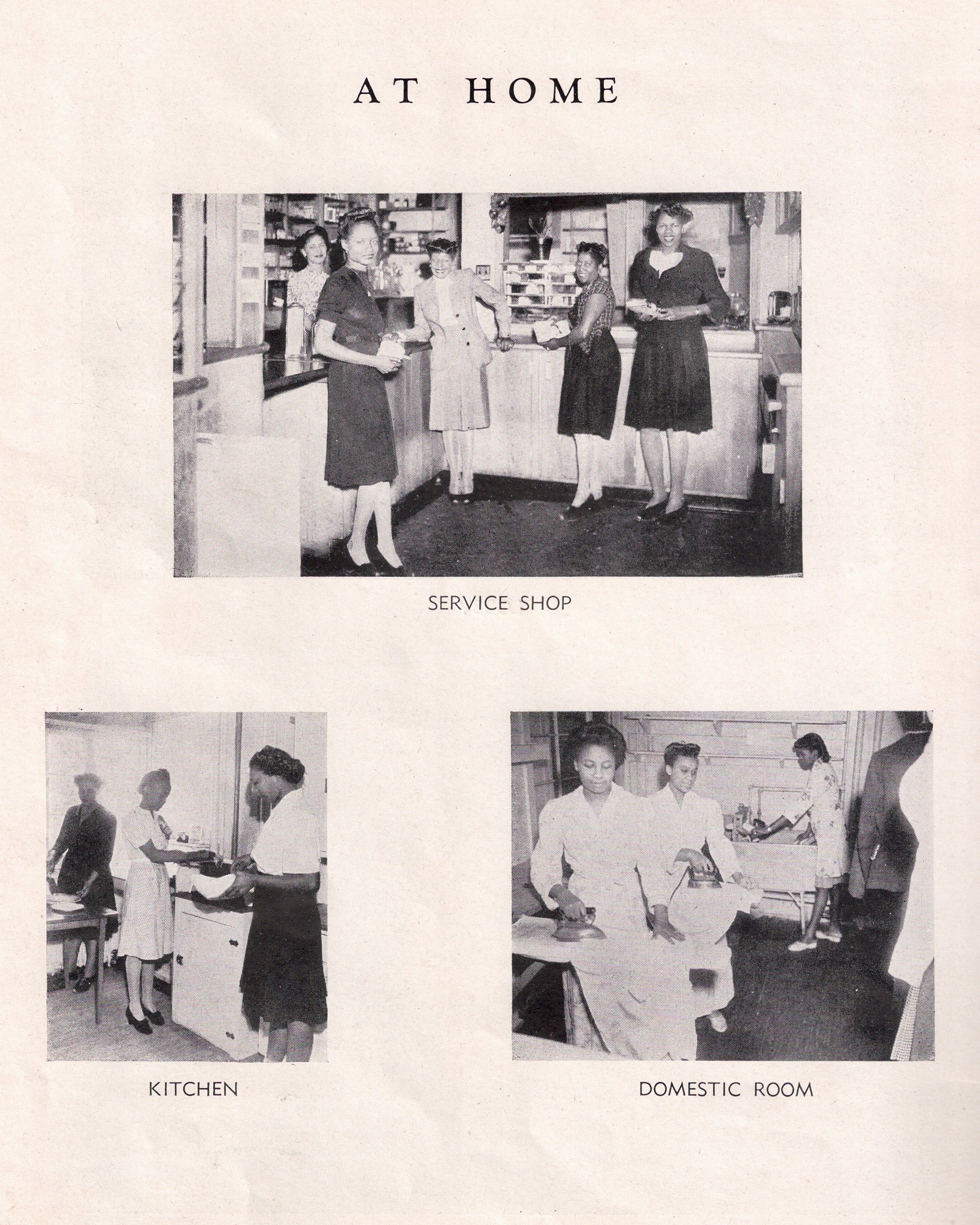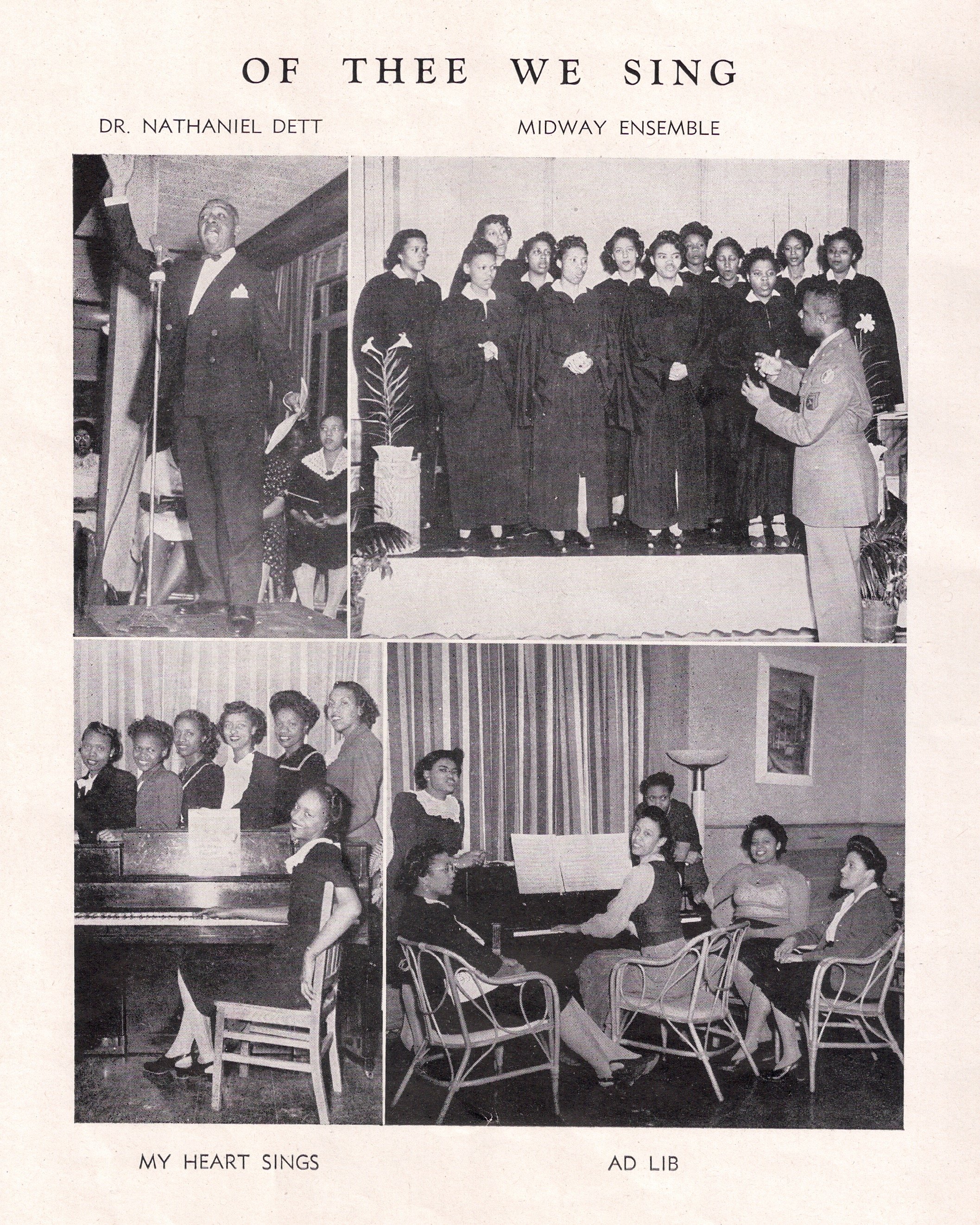My mother, Edith Brinn is this project’s original inspiration. Her yearbook, Whirl-i-Gig, a Pictorial Story of Midway Hall for Government Girls provided me with my first images of African American women who served as federal civil service employees in Washington, DC during World War II. This 1946 yearbook provides names and places of origin of the African American Girls who resided in Midway Hall during 1946. Edith’s story mirrors those of many African American women of her generation who successfully passed the civil service examination and accepted appointments in white-collar federal jobs in Washington, DC. These women traveled from across the United States to the nation's capital to accept civil service appointments in the Navy, Army, Treasury, Pentagon and other Federal Departments.
Do you know someone who was a Government Girl in the 1940s or 1950s? Look through the pages of the yearbook below and see if you can find her. My mother’s photo (Edith Brinn) can be found on the “B Wing” page. There’s another photo of her on the “At Ease” page. Do you have a different yearbook and would like to share it? Do you have photos or a story about a Government Girl? We’re interested in hearing from you! Fill out the contact form HERE.
-Dr. Aura Wharton-Beck
(Click on the pages below to see an enlarged image.)
“Government hotel (dormitory) for Negro women war workers. A group of young war worker-residents are shown enjoying a game of cards in the fully equipped game room of the Lucy D. Slowe Residence Hall, the first government constructed hotels for Negro women war workers in Washington, D.C. “ (Library of Congress photo) More about the segregated dorms.
Did you know that the first African American Greek letter sorority helped Black women find job opportunities and apply to take Civil Service examinations in the 1940s? Read more.
Destination to a new city, a new identity, a new adventure. (Photo credit: “Pennsylvania Station, New York, 1942, Marjory Collins)
Note: Three months after Pearl Harbor, the Washington Evening Star observed that “singly and in groups” nearly five hundred women came to Washington each week from “North, East, South, and West to be fitted, coglike, into the huge civilian war machine that is being fashioned here.” (Washington Evening Star, 2/8/42)










































